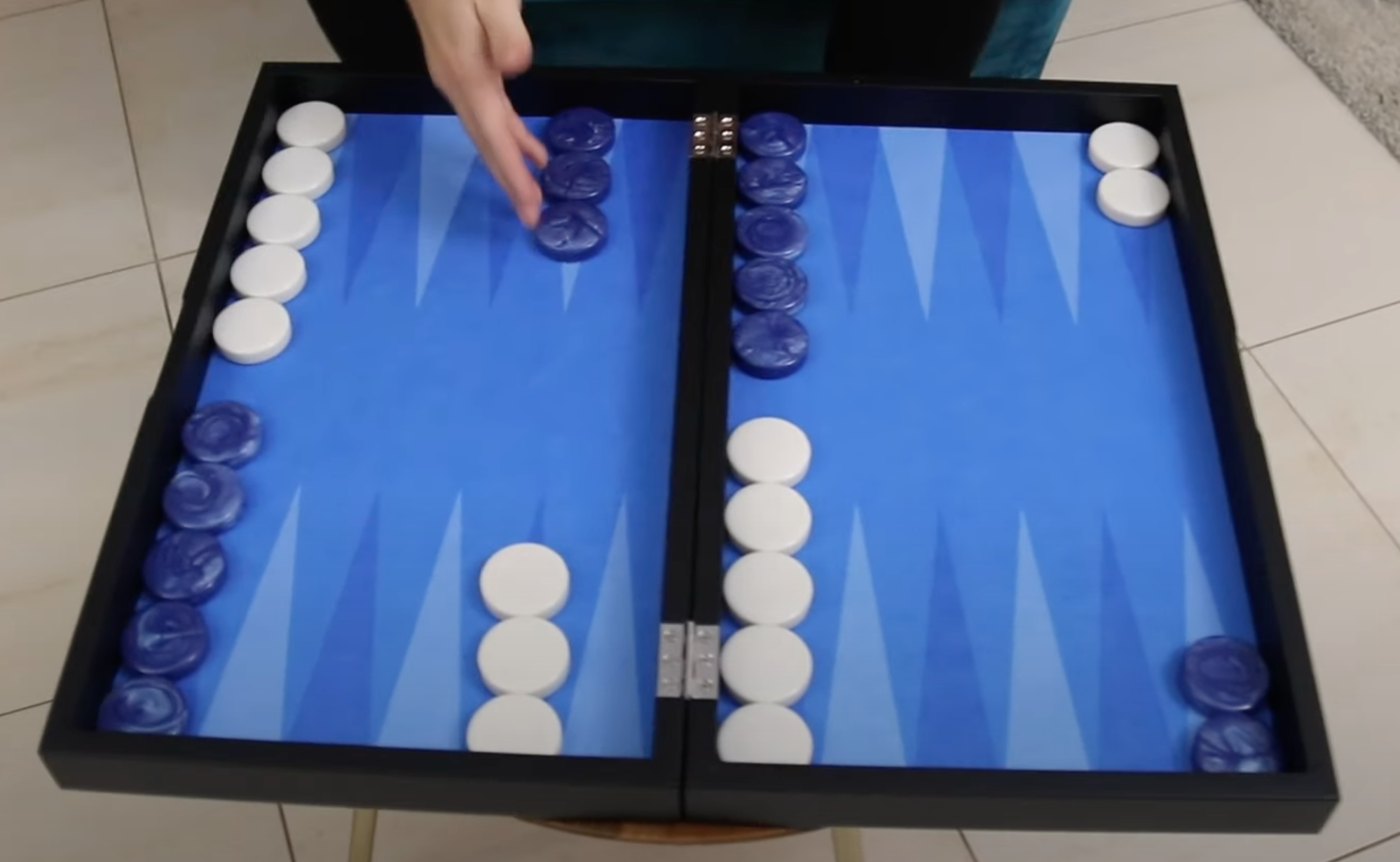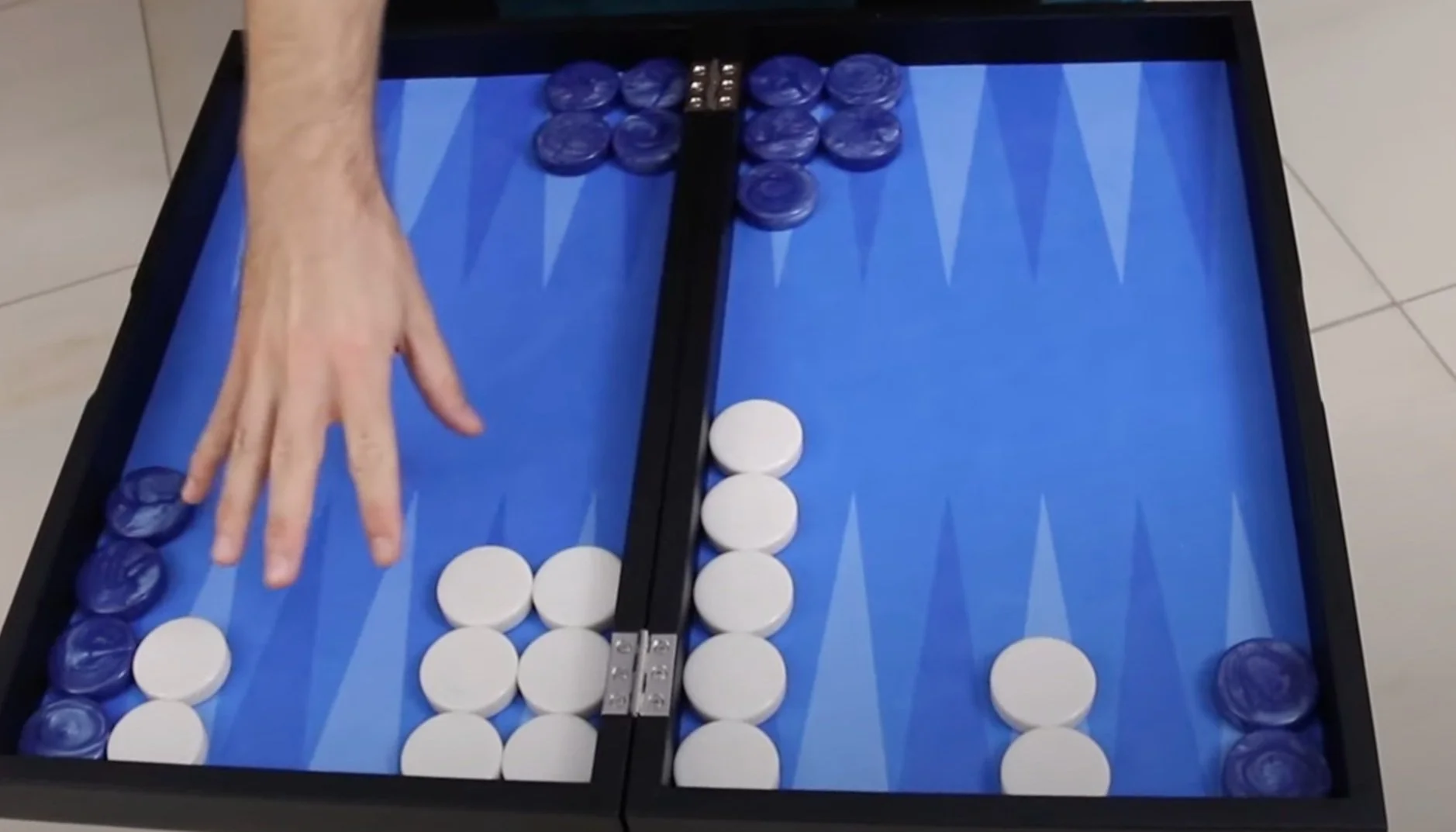The Dual Function of a Point
What's up, backgammon fans? In this blog post, I'm going to share an idea about the function of owning a point in backgammon.
In the opening position, each player owns four points - the 24-point, the midpoint, the 8-point, and the 6-point.
But, what's the function of a point when you own it? What's the purpose of it? Why is it good to own a point?
The Functions of Owning a Point
The point actually has a dual functionality, serving two equally good purposes.
1- It blocks your opponent from moving to this point:
Especially if you can form a prime like this:
then it's very powerful because you can trap your opponent's back checkers and win the game simply through priming.
So, the first functionality of a point is that it makes obstacles for your opponent, so he cannot simply move freely with his back checkers and get his checkers home.
2- A point serves as a safe landing space for the checkers behind it.
For instance, the 8-point in the opening game is a safe landing spot for your checkers from the midpoint:
And when your back checkers eventually get all the way around, it will be a safe space to land for those checkers as well:
Stacking may not be the most favorable option, but in some cases we might be forced to stack it in order not to leave a shot.
This is an important concept in terms of game plans because later on in the game, you will often have the decision whether to clear a point or to keep a point. Then you can ask yourself:
"What's the purpose of this point? Is this point a priming point? Is it to block my opponent from moving to this point?
or;
“Is this point useful in terms of bringing my back checkers home as a safe space?"
If it doesn't serve any of the two functions, then it's not an asset anymore. In that case, you could understand that it's probably a liability, and that you should clear it.
Another Way to Look at the Functions of a Point
Early on in the game, in the opening position, both players have a long way to go; because we've got 167 pips. For instance, let's say that Blue successfully forms a prime, White has an advanced anchor and has moved a lot of checkers as well:
In this position, White is actually ahead in the race. So, for White, the game plan is to run with the back checkers because he doesn't want to get stuck when he's ahead in the race. Blue, on the other hand, needs to prime because he's down in the race. So, for Blue, the purpose of all of the points in the prime is to block White from moving with the back checkers. The purpose for Blue is also to block White with his back checkers.
On the other hand, White doesn't need to block Blue because White is already ahead in the race. Therefore, White simply needs to run. When he comes all the way home, the 8, 7 and 6 points don't serve the function of blocking anymore.
Now, instead, they serve the function of safe landing spaces for the back checkers.
The moment those back checkers are safe, for instance, when they go to the 5-point, the checkers on the 8-point don't serve any of the two purposes anymore.
In that case, you would need to clear that point since it's a liability. That's the next thing White needs to do because that 8-point serves neither blocking nor landing functionality.
I hope this gave you some ideas of your own and will help you make better backgammon decisions!
You can watch the full video here!








